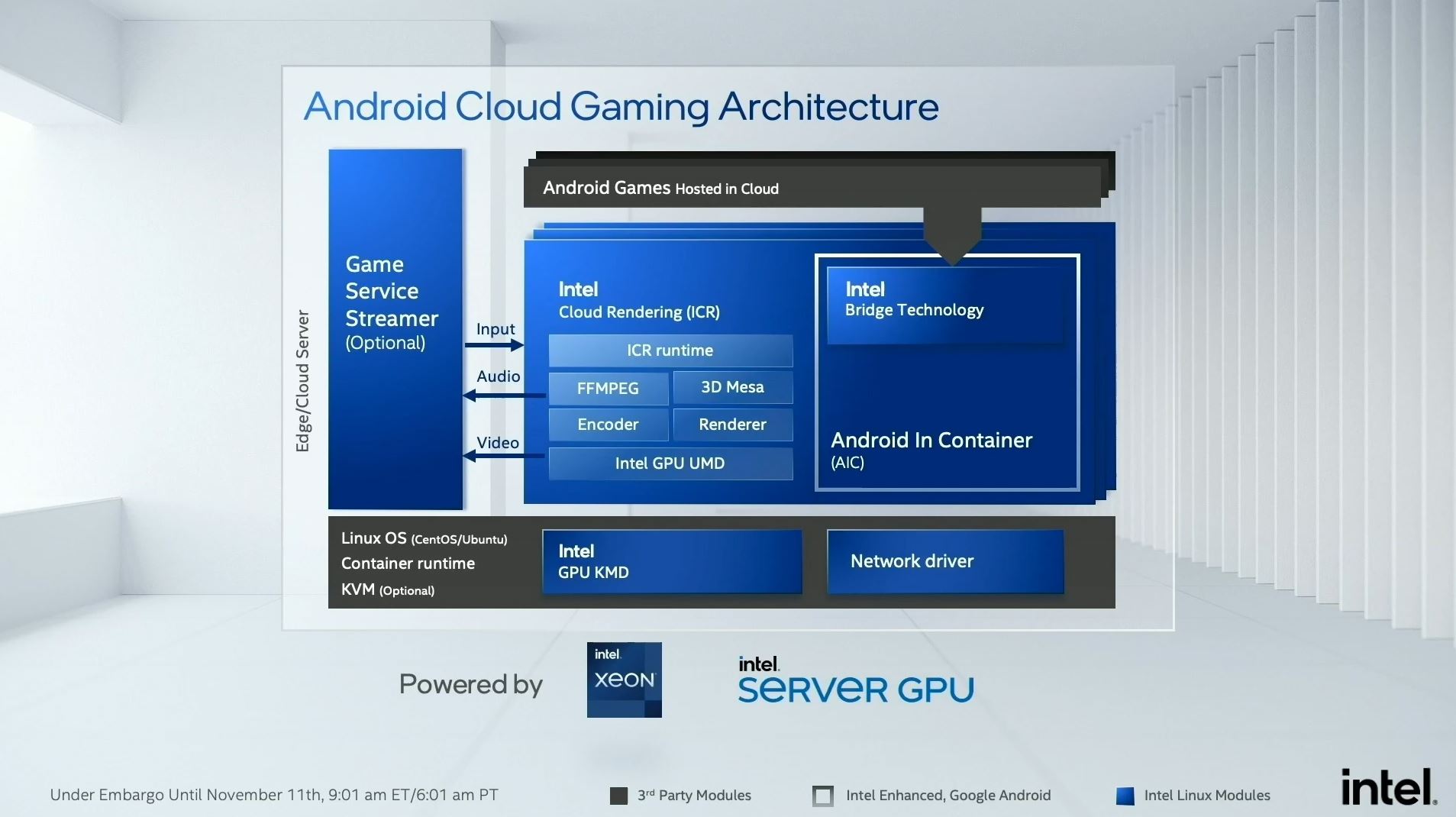Intel launches the H3C XG310 server graphics card for data centers
The well-known processor manufacturer Intel has announced the launch of the company’s first discrete graphics card for data centers. This discrete graphics card is built on the Intel Xeon core.
If you follow Intel, you should know that earlier the company announced plans for the Xeon graphics architecture, including dedicated graphics cards for servers based on this architecture.
More specifically, Intel server graphics are based on the Xe-Lp low-power micro-architecture, which is the same as Intel’s 11th-generation CPU integrated graphics and Iris Xe MAX.
Intel has not introduced too much about the graphics card, after all, this is for servers and data centers, not for the consumer market and home users.
According to Intel, the graphics card is energy-efficient and contains 8GB of onboard memory, which can bring high-density and low-latency solutions to the Android cloud gaming experience.

Image: Intel
Intel said that the graphics card is more affordable than competing products of NVIDIA, and the graphics card can be combined with Intel’s scalable Xeon processor to expand graphics performance.
In addition to Xe-LP, this series also has Xe-HP, Xe-HPC, and Xe-HPG. The LP series belongs to the low power consumption category. The HP series is a high-performance series, HPC is a high-performance computing series, HPG is a series optimized for games, and even HPG supports ray tracing.
Intel’s goal is to cover all aspects of graphics computing in the current server series, including artificial intelligence, machine learning, cloud games, asynchronous computing, and more.
Intel also announced the launch of the product H3C XG310 graphics card this time. The graphics card has four Xe-LP cores, 8GB of memory, and total onboard memory is 32GB.
Of course, it can be seen from the name that this is related to H3C. H3C builds an XG310 expansion card based on Intel server GPU to integrate these cores.
According to Intel’s introduction, H3C XG310 uses x16 PCIe Gen 3.0, and each server can install up to 4 expansion cards, that is, up to 16 cores can be installed.
Via: wccftech





